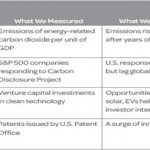Customizing the Business Excellence Model to tap its potential

Image source: Annie Spratt | Unsplash
Benefits of deploying BEM in an organization
BEMs administrating bodies based on assessment bestow awards/recognitions to companies judged excellence as per the model framework. Winning such an award is considered prestigious since it enhances the brand image of an organization and its stock/share value. The organization is characterized by high-quality products, environmental and societal friendliness, and customer orientation. Employees morale gets boosted with the organization’s culture of improvement and innovation is renewed. In turn, the practices of an award-winning organization become a benchmark for industries in that country/region. They also benefit the overall economy by facilitating the sharing of experiences and encouraging cooperation among businesses. The external feedback from the examiners provides organizations with objective information about current performance and helps identify areas of improvement. This helps organizations to analyze their present performance and strategize future road maps.Customizing the BEM for specific sectors
In spite of the advantages and contributions of the BEMs, a range of concerns has been raised by many researchers and practitioners. Relevance and usefulness of assessing an organization (through BEM) against fixed criteria as well as the weight and insufficiency of a balanced set of results are just some of the concerns that have been cited. The most important barriers when implementing the BEMs are the lack of time, physical, and financial resources due to their generic nature. The technologies in the last two decades have also evolved with great pace; especially now with Artificial Intelligence Machine Learning, and means of communication have greatly impacted the needs and expectations of all stakeholders, be it customers, investors, regulators, or employees. The post-pandemic era has also introduced the “new normal” which needs to be adopted quickly by organizations. Globalization, collaboration, e-commerce, stringent environment norms, extreme weathers, and ever-changing macro and microeconomic challenges are contributing to uncertainty which needs to be tackled with resilience and flexibility. These changes have significantly impacted the business world on a long-term basis. On one hand, the world faces challenges related to economic recession and the ever-changing business environment. On the other hand, BEMs couldn’t escape the impact of the VUCA (volatility, uncertainty, complexity, and ambiguity) phenomenon that is affecting most of the globe. The literature review over the last 15 years indicates many gaps associated with the effectiveness of the EFQM model. Authors have pointed out various shortcomings of the BEMs, but in the present context, two important gap areas are listed below:- The BEM is non-prescriptive. The generic and the one-fits-all approach has caused an issue of effective implementation of the model to a business sector. As such, the model demands adaptation to sector-specific modifications.
- Companies struggle to imbibe the model. First, the model is difficult to understand. Secondly, it is too time and resource-consuming to implement. Leaders also do not understand it fully, thereby causing a lack of commitment from them. The feedback report, which the organization receives post-assessment based on the model, is normally vague and difficult to decode. Eventually, the action plan that emerges does not bring desired improvements.
Conclusion
Business excellence initiatives and tools have been designed as having a generic approach and are ever-evolving. Such tools, although helpful in bringing improvements, have been met with challenges in implementation. One way to tap the full potential of these initiatives is customization for specific organizations. Since BEMs are meant to bring agility and flexibility in an organization, these should be flexible to change and imbibe to cater to different geography, cultures, sectors, and industries.
Tags: Benefits of deploying BEM in an organization, Business Excellence Models





